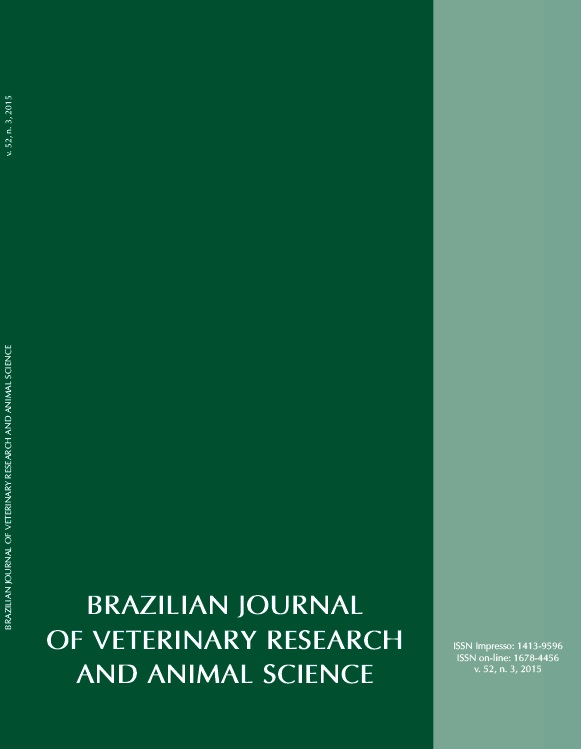Susceptibility and resistance to antimicrobial Staphylococcus aureus under biofilm
DOI:
https://doi.org/10.11606/issn.1678-4456.v52i3p228-233Keywords:
Mastitis, Microorganisms, Antimicrobial therapy, Microbial resistanceAbstract
Staphylococcus is an important agent of mastitis, especially when biofilm producers are related to a number of mechanisms of resistance to different types of infections. The objective of this research was to evaluate the susceptibility and resistance of Staphylococcus aureus strains isolates from cases of bovine mastitis and milking environment under conditions of biofilm, compared to three different concentrations in different antimicrobials. Thirty-two strains used were S. aureus that, due to the inhibition tests, minimal biofilm eradication concentration were tested using cephalexin, amoxicillin and rifampin at concentrations of 30 mg/mL, and 50 mg/mL 100 mg/mL for 12 hours, and efficiency of tests evaluated by counting the colony forming units and the microplate test. The results revealed that among the tested antibiotics cephalexin showed the best efficiency at the three concentrations tested, and rifampin and amoxicillin were more efficient at concentrations of 50 and 100 mg/mL. These data demonstrate the importance of targeted antibiotic therapy associated with the correct cleaning of milking equipment, thus, preventing the formation of biofilm, avoiding persistent microbial adhesion in equipment, and the spread of microorganisms by ascending channel teats among herd animals.
Downloads
Downloads
Published
Issue
Section
License
The journal content is authorized under the Creative Commons BY-NC-SA license (summary of the license: https://





